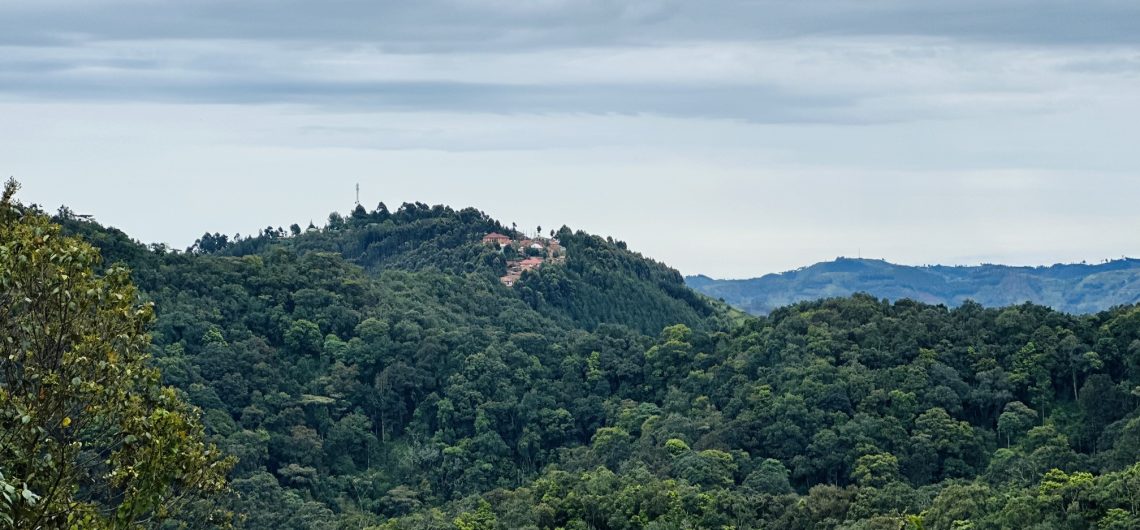
Nyungwe Forest Primates.
Nyungwe National Park is one of the largest national parks in Rwanda celebrated for its exceptional contribution in boosting Rwanda’s tourism industry. Nyungwe is characterized by a thick tropical rainforest harboring several attractive species of flora and fauna.
The National Park is located in the southwest of Rwanda as you approach Rwanda’s border with Burundi in the Rusizi district. Nyungwe occupies an area of approximately 1019 square kilometers which is characterized by a thick forest cover and diverse landscapes. It is such factors that make it a favorable habitat to 13 known primates.
Nyungwe forest primates.
The primates in the National Park include;
Chimpanzees.
Chimpanzees are a species of great ape. They are endemic to the forests and savannah grasslands of tropical Africa. Chimpanzees can be found in Nyungwe Forest National Park too since it is part of the tropical regions on the African continent.
Chimpanzees are closely related to human beings; this is evident in the fact that they share 98.4% of the human DNA. Chimpanzees live in isolated groups of 15 to 150 individuals. Several habituated families in the forest can be trekked down by visitors all through the year.
Blue monkeys.
Also known as the diademed monkeys, the blue monkeys are a species of the old-world monkey. They are native to central and East African tropical rainforests. Blue monkeys reside in the Congo basins and East African Rift Valley areas. The blue monkeys are called so because of their crown which is blackish blue including the feet, front legs, and the arms. The blue monkeys too can be observed in Nyungwe forest.
L’hoests monkeys.
The l’hoest Monkeys are also known as the mountain monkeys. They are endemic to the mountainous regions, which explains why they reside in the Virunga massif. Some of them reside in the Congo basin forests too and in the East African Rift Valley areas. They can be distinguished from other primates by their dark coat and white beard. Nyungwe Forest is blessed to host these awesome creatures too.
Owl-faced monkeys.
The owl-faced monkeys are also known as the Hamlyn monkeys. They are among the old species of the old-world monkey. It is native to the bamboo forest, especially in the Congo basins. They are an absolutely rare breed known from a few specimens. Owl-faced monkeys travel on the ground and it is arguably a nocturnal according to the researchers of IUCN. Hamlyn’s Monkeys can also be found in Nyungwe forest.
Golden monkeys.
The golden monkeys are a world-old monkey species endemic to the Virunga volcanic mountains of central Africa. They are a subspecies of the blue monkey. They are endangered according to IUCN reports. The golden monkeys have similarities with the blue monkeys except that they have a golden orange patch on the upper flanks and the back. Golden monkeys live in social groups of up to 30 individuals. They can be trekked in the Nyungwe forest as well.
Red-tailed monkeys.
The red-tailed monkeys are also known as the black cheeked white-nosed monkeys. It belongs to the primate species of the family Cercopithecoidea. They are regarded as of less concern according to IUCN reports of conservation status. Red-tailed monkeys can be found in central African forests and Nyungwe National Park too.
Crowned monkey.
These are medium-sized species of the world’s old monkey. They are also known as the crested Mona monkeys. Golden monkeys prefer lowland and submarine forests, particularly in the upper strata of the trees, the canopies at about 66 to 82 feet above the forest floor. The crowned monkey’s males are larger as compared to the females. their tails are longer than their bodies. Nyungwe National Park also hosts a significant population of these.
Dent’s mona monkey.
The dent’s mona monkey too is an old-world monkey in the family Cercopithecoidea. It is endemic to the Democratic Republic of Congo, Rwanda, and the Central African Republic. In Rwanda, it can be found in the Nyungwe forest. The dent’s Mona monkey was recently classified as a subspecies of the wolf’s Mona monkey.
Vervet monkeys.
The vervet monkeys also belong to the Old World’s monkey and are native to the African tropical forests and savanna grasslands. They are distinguished majorly by their bluish genitals. They can also be identified depending on the yellow to greenish-brown coat of hair they possess. They have white bellies with white fur too on their brows and cheeks.
Olive baboons.
These are also known as Anubis baboons. They too are an old-world monkey species. They are arguably the most wide-ranging of all baboon species. The olive baboons are endemic to over 25 countries all over Africa, Rwanda inclusive. Olive baboons can be encountered in the Nyungwe forest too on a good day.
Grey-cheeked mangabeys.
The grey-cheeked mangabeys are also known as the white-cheeked mangabeys. They are endemic to central African riverine forests. They range from Cameroon to Gabon however a significant population of them can be seen in Nyungwe Forest. The grey-cheeked mangabeys are dark monkeys, small and hairy.
Black and white colobus monkeys.
The black and white colobus monkeys are closely related to the red colobus monkeys. There are 5 species of this monkey and up to 8 subspecies. The black and white colobus monkeys are endemic to the Afro-montane forests and riverine forests in East Africa. Black and white colobus monkeys can be found in Nyungwe forests too in Rwanda.
